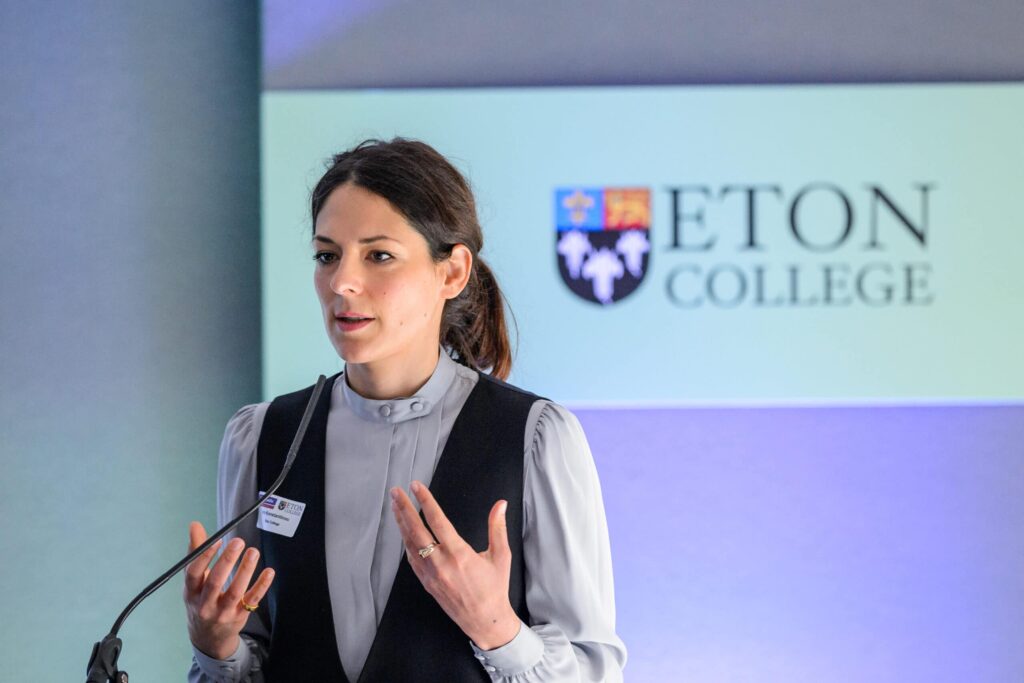This week’s blog post is based on Chapter Five of Jared Cooney Horvath and David Bott’s book entitled 10 Things Schools Get Wrong: And How We Can Get Them Right. The chapter formed the basis of this week’s Teaching and Learning Reading Group, hosted here at Eton.
Horvath and Bott’s chapter opens with a sporting analogy. Citing Roger Bannister’s success in running the four-minute mile, they then quote Yoram Wind who argued that ‘what changed was the mental model’.[1] Wind goes on to state that in the aftermath of Bannister’s triumph, multiple runners also ran a mile in under four minutes.[2] ‘The runners of the past had been held back by a mindset that said they could not surpass the four-minute mile. When that limit was broken, the others saw that they could do something they had previously thought impossible’.[3]
Fixed vs. Growth Mindset
A similar idea is espoused in Carol Dweck’s 2006 book Mindset.[4] Horvath and Bott summarise the three main tenets of her thesis:
1. Human beings can be divided into two distinct mindset categories.
2. Those with a fixed mindset believe that one’s abilities are fundamentally unchangeable.
3. Those with a growth mindset believe that one’s abilities are fundamentally malleable.
Dweck’s book is immensely popular and has been printed over 2 million times and translated into more than 20 languages. What makes her philosophy so attractive, Horvath and Bott argue, is that her ideas have face validity.[5] That is, the concept of mindset feels right because, more often than not, it is a self-fulfilling prophecy.
Horvath and Bott argue that we can see this in Dweck’s early data and research, which suggests that growth mindset can elevate cognitive performance, increase achievement, boost grades, and even help students persist in the face of challenging problems.[6] With these claims in mind, it is understandable why teachers and schools across the world were keen to promote the concept of growth mindset.
But herein lies the problem. Although mindset may be powerful when studied in controlled laboratories, this does not always translate well into the classroom.
In 2018, Cape Western Reserve University published a comprehensive meta-analysis on mindset which analysed 273 studies investigating the link between mindset and academic achievement; in addition to a further 43 studies on the impact of mindset interventions.[7] The study concluded that, on the whole, ‘the correlation between mindset and academic achievement is very weak’ and that there is only ‘a very small overall effect of mindset interventions on academic achievement’.[8]
Hype
In light of the 2018 meta-analysis, how do we account for the sheer amount of hype surrounding the apparent effectiveness of promoting a growth mindset in schools?
Horvath and Bott propose the following four factors:
– The majority of people, including educators, do not read original research. A typical classroom teacher often does not have time to read through hundreds of published studies. Instead, we often receive information in a digested form i.e. through conferences, workshops, TED Talks and webinars etc.[9] In this extrapolated format, research can become exaggerated, generalised and at times, erroneous. As a result, teachers end up forming opinions on research studies which are not always accurate.[10]
– One of the reasons behind why the concept of mindset was so popular and received so much hype was because of its apparent simplicity. However, Horvath and Bott claim that Dweck’s early studies made some broad educational generalisations which became problematic when trying to determine correlation.[11]
– Furthermore, we must recognise that teaching is an incredibly subtle craft and teachers have to adapt to the various needs of students on a daily basis. Laboratories, on the other hand, often seek to isolate and eliminate variables. Dweck’s research did not always take this into account and therefore, the positive benefits of promoting a growth mindset in the classroom may have been oversold to teachers.
– Finally, there is a discrepancy between those who believe schools are learning institutions and those who believe schools are performance institutions. Growth mindset only truly works when one embraces failure and this can be difficult in a school which is focused on performance and results.[12]
Although there is a lot to be learned from Carol Dweck’s 2006 study, Horvath and Bott claim that growth mindset is a classic example of hype overshadowing reality. That is, in the sense that it was the ‘loudest voice telling the most compelling story’ and as a result, the study successfully convinced a significant number of schools and teachers that education could be elevated simply by changing student beliefs. Instead, academics need to ensure they present their findings more accurately and in future, educators need to consider research in a more nuanced manner.
[1] G. Holland, (1955). 1954 & Its Sportsman: Roger Bannister. Sports Illustrated. Available at: https://vault.si.com/vault/1955/01/03/1954-its-sportsman-roger-bannister
[2] N. Brannen, (2018). Only 1,497 Humans Have Ever Broken the 4-minute Mile – And I’m One of Them. CBC Sports. Available at: https://www.cbc.ca/playersvoice/entry/only-1497-humans-have-ever-broken-the-4- minute-mile-and-im-one-of-them.
[3] Y. Wind & Crook, C. (2000). The Power of Impossible Thinking. (Philadelphia: Wharton School Publishers).
[4] C. S. Dweck (2006). Mindset. (New York: Ballantine Books).
[5] R. B. Holden (2010). “Face validity”. in Weiner, Irving, Craighead and Edward (eds.), The Corsini Encyclopedia of Psychology. (Hoboken: Wiley) pp.637–638.
[6] H. Grant & Dweck, C. S. (2003). Clarifying Achievement Goals and Their Impact. Journal of Personality and Social Psychology, 85(3), p.541.
C. M. Mueller & Dweck, C. S. (1998). Praise for Intelligence can Undermine Children’s Motivation and Performance. Journal of Personality and Social Psychology, 75(1), p.33.
[7] V. F. Sisk, Burgoyne, A. P., Sun, J., Butler, J. L., & Macnamara, B. N. (2018). To What Extent and Under Which Circumstances are Growth Mind-sets Important to Academic Achievement? Two Meta-analyses. Psychological Science, 29(4), pp.549-571.
[8] Ibid.
[9] G. Latham (1993). Do Educators use the Literature of the Profession?. NASSP Bulletin, 77(550), pp.63-70.
[10] J. S. Zeuli (1994). How do Teachers Understand Research When They Read it? Teaching and Teacher Education, 10(1), pp.39-55.
[11] C. S. Dweck (2008). Brainology. Available at: https://www.nais.org/magazine/independent-school/winter-2008/brainology/
[12] C. S. Dweck (2020). in J. Severs, Growth Mindset: Where Did it Go Wrong? Times Education Supplement. Available at: https://www.tes.com/news/growth-mindsetwhere-did-it-go-wrong




